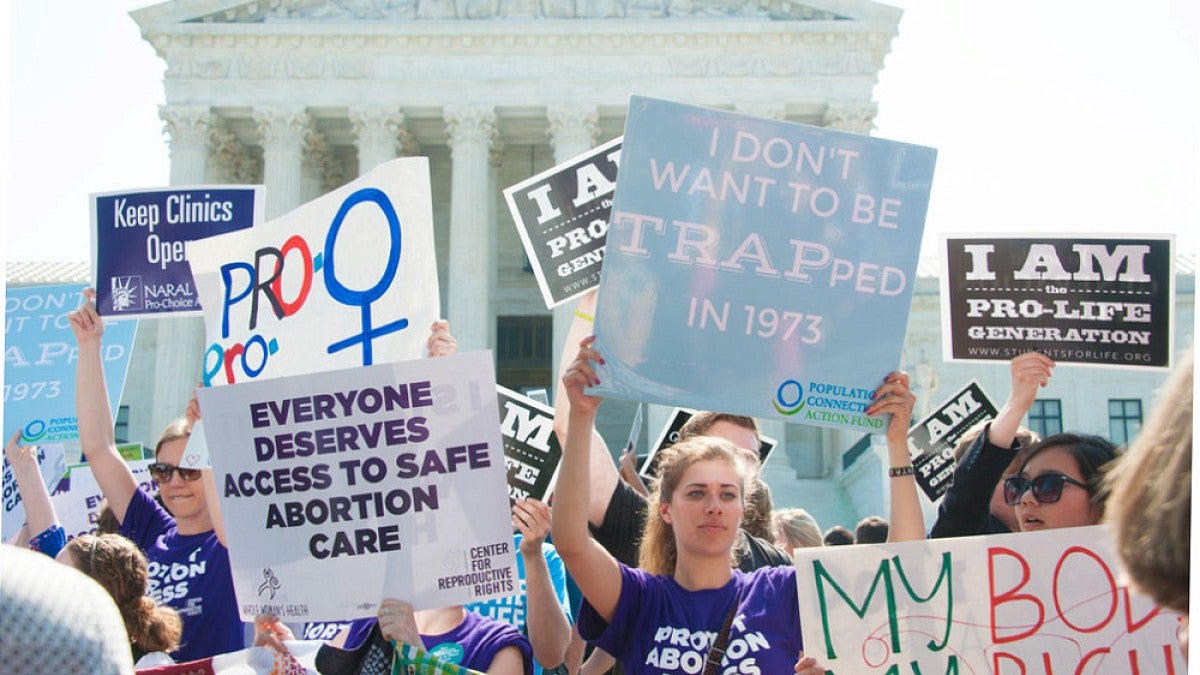Few topics are as hotly debated as the 1973 U.S. Supreme Court decision Roe v. Wade, so it was a shot heard around the internet when Politico recently reported the existence of a leaked draft foreshadowing its possible reversal.
The leak not only raises questions about the security of the Supreme Court decision process but also how public opinion might factor into how the justices ultimate vote. A decision to overturn Roe would also affect a more recent decision, Planned Parenthood v. Casey, which upheld Roe but allowed some abortion restrictions to stand.
The draft reportedly was prepared by Justice Samuel Alito, one of the court’s more conservative members. The court is expected to release its official ruling this summer.
UO experts in political science, law and journalism are weighing in on the significance of the leak as well as the legal issues likely to be raised, should justices vote along the lines suggested by the leaked draft.

Professor of practice, School of Law
“It's not a shock that the majority voted to end Roe,” said Epps, who authored an op-ed on the draft decision in Washington Monthly. “I expected that. It is shocking that Alito's tone is so arrogant and dismissive. I had thought there might be a plurality Roberts opinion ‘preserving’ Casey but holding that a 15-week ban is not an ‘undue burden,’ which would have overruled Casey and Roe but wouldn't say so.
“Alito seems to be announcing that there's a new sheriff in town and that precedent is no longer a thing. For that reason, his breezy assurance that this opinion has no relevance to other unenumerated rights cases — for example, same-sex marriage, contraception, interracial marriage, etc. — rings to me as hollow as the piece of paper Neville Chamberlain waved to show that Germany would never go further than the Sudetenland.
“It's a very badly done opinion and the misogyny is patent throughout.”

Professor of political science
College of Arts and Sciences
“The substance of this decision will be pretty dramatic and raises a lot of questions,” said Gash, who has written on how conservative courts have gradually carved out room to further limit abortion protections. “There’s talk of roughly 23 states implementing bans. Some are pre-Roe bans, and there’s a question of whether those laws are still any good, whether they can stand up to legal scrutiny.
“Then there’s the question of how many more states will pile on. There’s also the question of Congress. Will they enact a federal ban? How will that affect the 16 or so states with protective laws? How this will affect other cases, like same-sex marriage? This could set a precedent that impacts other issues that were considered settled law.
“The way this draft decision is worded, it could dismantle the doctrine of stare decisis, which basically says that courts will generally uphold previous judicial precedents. That’s why when the court looked at Casey in 1992, they did not overturn Roe.
“It’s not even the actual decision and we are already seeing action and movement, like with Texas Gov. Greg Abbott, who has said he is going back and looking at previously overturned laws to see if they can be viable law again. That’s going to be a really big problem for the courts.”

Professor, director of journalism and Shirley Papé Chair in Emerging Media
School of Journalism and Communication
Because the leaked document is a draft and nothing is final, Lewis said news organizations need to keep in mind that nothing has yet changed, and the court’s ultimate determination could be in flux.
“At the same time, though, there’s good reason to believe that a conservative court is headed in this direction, and so it’s perfectly appropriate to report as if this were the decision and focus on the consequences,” he said.
“While the substance of the leak is obviously the most consequential factor here, the fact that this draft decision was leaked still remains pertinent,” he said. “How will this leak, for example, accelerate questions about the legitimacy and politicization of the court? What might it portend about the relationship between the court and the American public and how that public learns about the court’s processes and decisions? There’s a lot we still don’t know.
“Leaks are a vital part of the journalistic process, and yet reporters always have to be thoughtful about the motivations of those who leak information and how they present and explain those leaks to the public. This is especially true at a time when trust in journalism is under stress. Journalists can work toward greater transparency about their process, methods and ethics.”
—By Emmily Bristol, Office of the Provost


